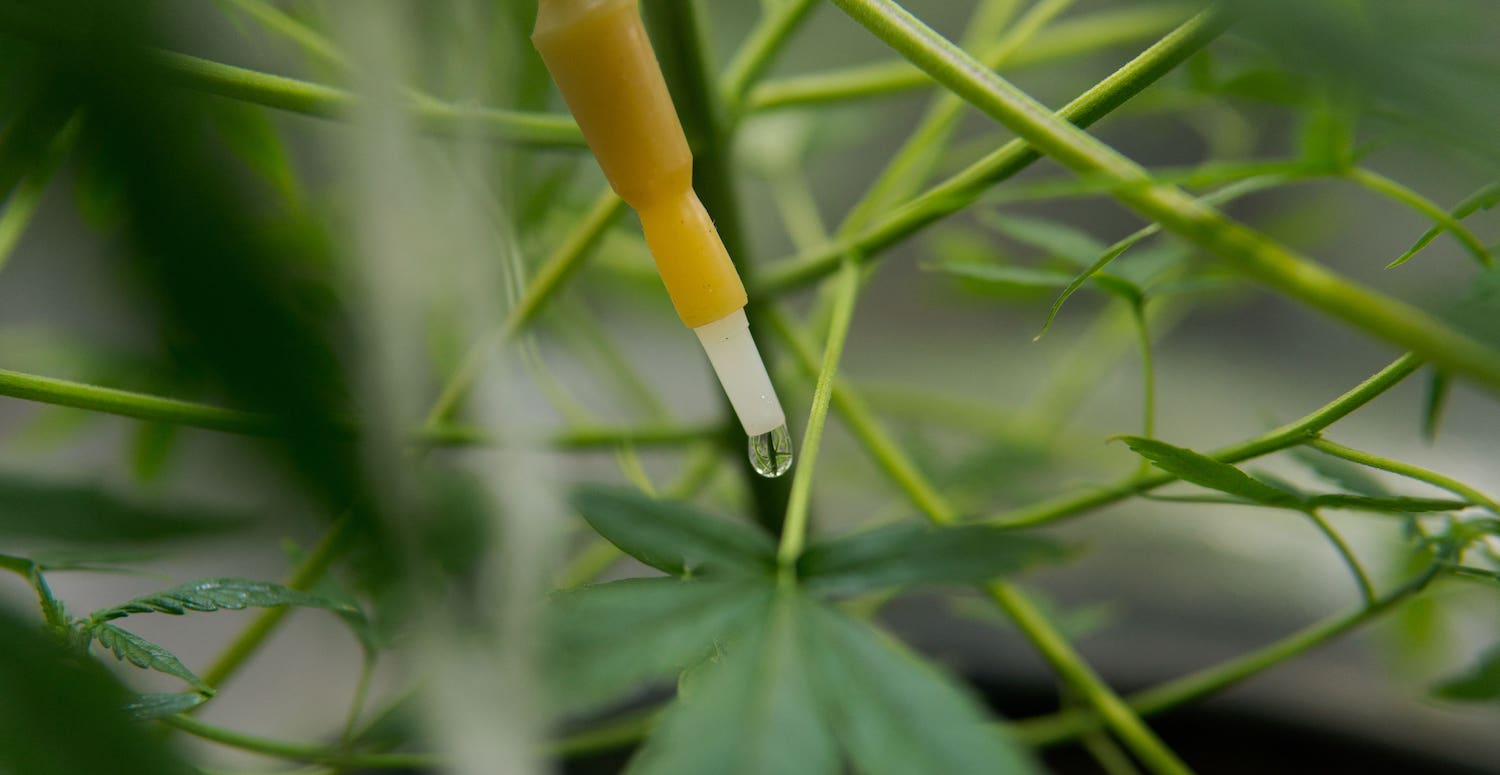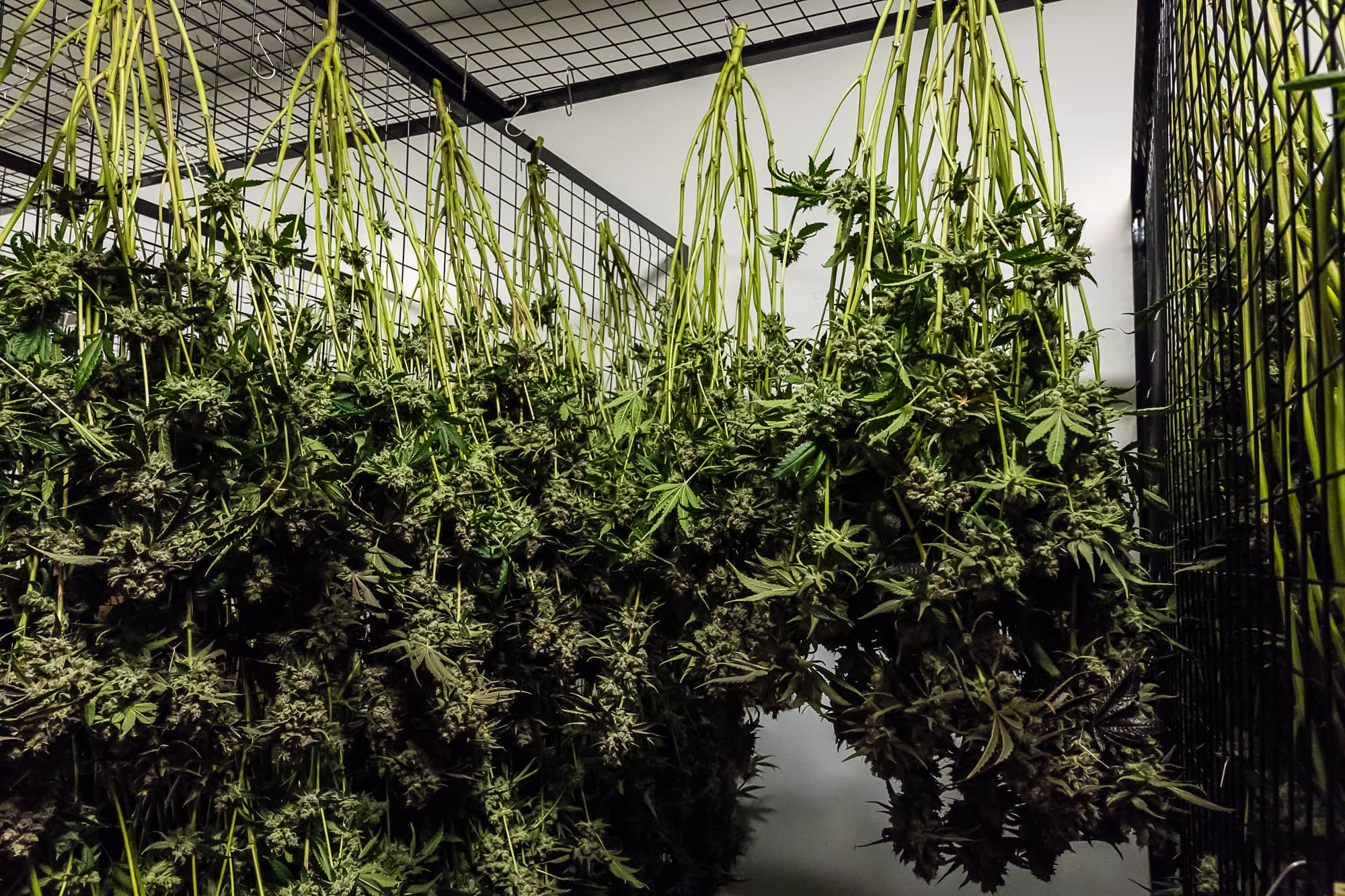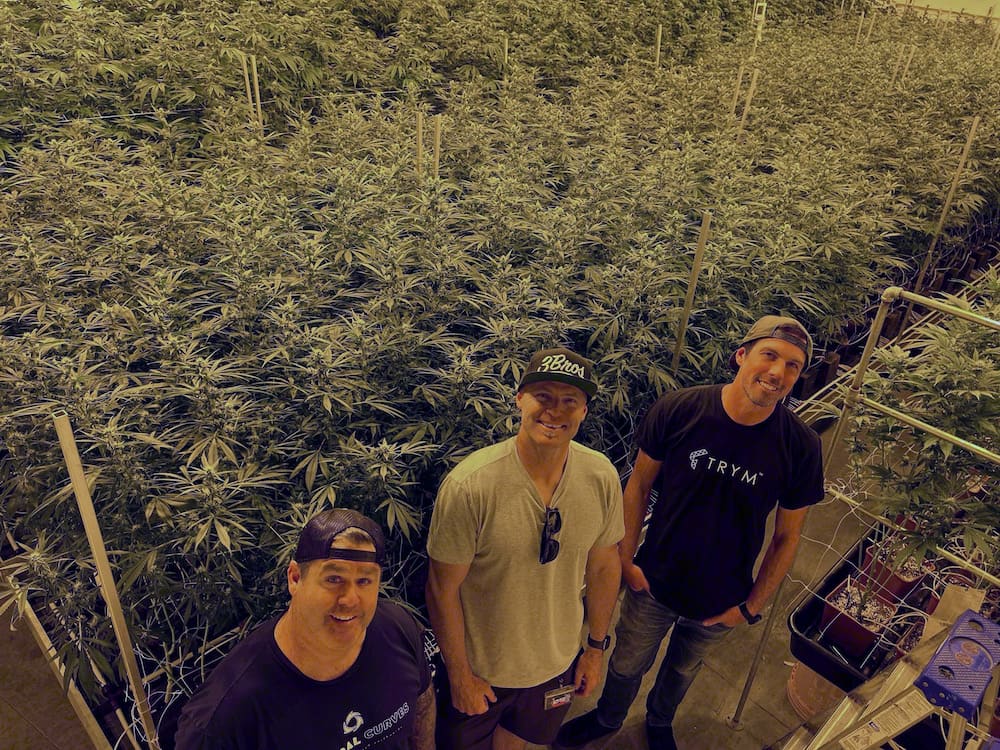Starting a business requires a lot of planning, and many business owners focus on creating a cannabis business plan to help them secure funding. However, an operations plan is just as important, if not more so, to ensure the success of your organization. In this article, we’ll discuss what a cultivation operations plan is, why it’s essential, and how to create one.
What is a cultivation operations plan?
A cultivation operations plan is a document that outlines how your business will run on a day-to-day basis. It covers everything from staff roles and responsibilities to resource allocation and timelines. A well-structured operations plan is crucial to the success of any organization as it helps standardize practices and promotes effective resource utilization.
A cultivation operations plan is one of the most important documents for your business as it provides a framework for your team to work within. It ensures that everyone understands their roles and responsibilities and that all tasks are completed promptly. This document also connects daily tasks with overarching business goals and guides future operations and projects.
How to Create a Comprehensive Cultivation Operations Plan
At its core, the operational plan documents cultivation best practices, focusing on quality control and risk minimization. It’s crucial to clearly define staff roles, responsibilities, facility layout, equipment, and resource requirements.
Every staff member must understand their roles and responsibilities. A well-organized plan provides this guidance for the team. A clear chain of command can help ensure that all tasks are completed promptly and that everyone is accountable for their performance.
Utilizing an Operational Plan Template
Creating an operational plan can be daunting, especially for small businesses and organizations that may not have the resources to hire consultants. That’s why we’ve developed a cultivation operations plan template to guide you through the process. Our template is designed to help you produce a well-structured, comprehensive document to set your business up for success.
6 Benefits of Developing an Operations Plan
1. Enhanced Understanding of Cannabis Business Processes
Developing an operations plan is an opportunity to perform a comprehensive analysis of processes, leading to improved organization and efficiency. By defining and documenting your business processes, you can identify areas that need improvement, streamline operations, and enhance your understanding of the business.
2. Risk Management
Creating an operations and cultivation plan enables you to spot potential issues and proactively develop strategies to manage them, preventing costly troubles and setbacks in production. Identifying and addressing potential risks can protect your business from unforeseen challenges and minimize losses.
3. Effective Communication and Teamwork
A well-defined operations plan guides the entire team, clarifying roles and responsibilities and encouraging improved communication and collaboration. By fostering effective communication and teamwork, you can ensure everyone works towards a common goal and maximize productivity.

4. Competitive Advantage
An operations plan enables informed decision-making and strategic approaches, helping cultivators gain a competitive edge in the cannabis industry. By staying ahead of the competition, you can maximize your chances of success and achieve sustainable growth.
5. Regulatory Compliance
A thorough operations plan helps business owners meet local, state, and federal regulatory requirements, avoiding potential fines or penalties. Ensuring compliance with regulations can protect your business’s reputation and avoid legal issues.
6. Maximize Profitability and Scalability
An operations plan focuses on efficiency and cost control, leading to higher yields, better product quality, and increased profits. By maximizing profitability, you can reinvest in your business and plan for scaling. The plan also provides a foundation for expansion, enabling strategic decisions for sustainable growth.
How do different types of cultivation facilities impact an operations plan?
The type of cannabis cultivation facility – indoor, greenhouse, or outdoor – significantly influences the design and writing of an operations plan. Each facility type has unique characteristics, requirements, and challenges that must be covered in the cultivation plan.

Indoor facilities
Operations plans for indoor cannabis cultivation facilities must focus on controlling environmental conditions like temperature, humidity, and lighting. The document should describe the selection of artificial lighting, automated systems, and environmental monitoring to ensure optimal plant growth. Indoor cultivation also raises unique considerations for space utilization, energy efficiency, and facility maintenance.
Greenhouse facilities
Operational plans for greenhouse cannabis cultivation facilities need to account for using natural sunlight or supplemental lighting and managing temperature, ventilation, and CO2 enrichment systems. The plan should outline strategies for maximizing light exposure, balancing energy consumption, and maintaining a suitable environment for plant growth. It should also consider pest control and disease management in this partially-controlled environment.
Outdoor facilities
Operations plans for outdoor cannabis cultivation facilities must address the challenges associated with exposure to natural elements, like weather conditions and environmental factors. The plan should discuss using specialized equipment, like irrigation systems, and strategies for mitigating potential risks from pests, diseases, and weather events. The operational plan should also emphasize the importance of site selection, soil preparation, and crop management to ensure a successful harvest.
Components of an Operations Plan
A comprehensive cannabis cultivation operations plan is essential for any successful cannabis cultivation business, whether a small-scale craft grow or a large commercial enterprise. The plan should outline the necessary steps and components to ensure a productive, compliant, and efficient facility. Here are some key elements to include in a cannabis cultivation operations plan:
Facility design and layout
The design and layout of your cannabis cultivation facility are crucial to the success of your operation. Your plan should include location, size, security, climate control, lighting, and waste disposal details.

Cultivar Selection
Consider desired effects, potency, yield, growth characteristics, and market demand when making informed choices.
Planting and propagation
A well-planned planting and propagation strategy is necessary for maintaining a consistent supply of cannabis plants. Your operational plan should address planting schedules, propagation methods, and protocols that optimize success rates.
Additionally, if using clones, outline procedures for maintaining healthy mother plants to ensure consistent and high-quality cuttings.
Production Plan
The production plan outlines how cannabis crops are cultivated each year. It includes details such as planting schedules, fertilizer applications, pest management strategies, harvest timing, post-harvest curing methods, and more. This plan should also include projected yields and quality control measures to ensure consistent product quality throughout the season.
Harvesting and Curing
Proper harvesting, drying, and curing techniques are crucial for preserving the quality and potency of your cannabis products. Your operations plan should outline harvesting procedures, such as timing, tools, equipment, and protocols for drying and curing the cannabis flowers to ensure optimal moisture content, terpene preservation, and product quality.
Post-Harvest Processing
Once the crop has been harvested and cured, it must undergo post-harvest processing to prepare for sale or storage. The team will trim, grade, sort, package, label, test for potency and contaminants, and any other necessary steps. Following all applicable regulations is essential when carrying out post-harvest processing activities.

Nutrient management
Proper nutrient management is crucial for producing healthy, high-quality cannabis plants. Your operations plan should include detailed feeding schedules that consider the specific nutrient requirements of your chosen cultivars and the plants’ growth stages. The plan should outline the types and amounts of nutrients and guidelines for monitoring and adjusting nutrient levels. Additionally, plan for addressing when things go off-balance, like at the first signs of nutrient burn.
Integrated Pest Management (IPM)
Developing an IPM plan is crucial for preventing and controlling pests, diseases, and other environmental stressors in your cannabis cultivation operation. Your operations plan should detail IPM strategies, such as cultural practices, biological control, and the judicious use of chemical controls when necessary. The plan should also outline monitoring and record-keeping protocols to track pest populations and assess the effectiveness of control measures.
Irrigation and water management
An efficient irrigation system is essential for optimizing plant growth and conserving water resources. Your operations plan should address the design and implementation of an irrigation system that meets the specific needs of your cannabis plants while also complying with local regulations. Include information on irrigation frequency, monitoring soil moisture levels, and water conservation strategies.
Environmental Controls & Monitoring
Maintaining an optimal growing environment is key to producing high-quality cannabis. Your operations plan should address the systems and equipment necessary to control your facility’s temperature, humidity, lighting, and ventilation. Include guidelines for monitoring and adjusting environmental conditions and protocols for handling equipment malfunctions or emergencies.
Quality control and testing
Implementing quality control measures and regular testing is essential for ensuring the safety, potency, and compliance of your cannabis products. Your operations plan should address the procedures for sampling and testing cannabis flowers, including in-house testing or partnerships with third-party laboratories. The plan should also outline strategies for maintaining product consistency and meeting regulatory requirements.
Waste management
A waste management plan will outline the strategies and procedures for properly disposing of cannabis waste and minimizing its environmental impact. This section emphasizes the importance of responsible waste management practices, compliance with applicable regulations, and adopting sustainable methods to reduce the operation’s ecological footprint.
Employee training and safety
This section describes the training programs that ensure employees are well-versed in all relevant regulations, safety protocols, and cultivation best practices. No matter how many processes you design, it all comes down to the staff and your training programs. A skilled and knowledgeable workforce will help maintain a safe, compliant, and productive operation while minimizing potential risks and hazards.
Equipment
Equipment plays a vital role in a cannabis cultivation operation. Growers must consider what equipment is used or needed for their operations, such as lights, environmental sensors, watering systems, and fans. It’s also essential to ensure that all equipment meets safety and quality standards and applicable regulations.

Employees
Employee training and development is essential for maintaining a skilled, knowledgeable, and productive workforce. Your operations plan should detail new employees’ onboarding and training processes and ongoing education and professional development opportunities for all staff members.
Marketing and Sales
A marketing and sales plan includes strategies for reaching potential customers, pricing strategies, distribution methods, packaging design, advertising campaigns, and more. Additionally, ensuring that all products comply with local laws and regulations before being marketed and sold is a requirement.
Security Systems
Ensuring the safety of personnel, products, and facility equipment is crucial for any commercial cannabis cultivation business. It’s equally important to address external threats, like theft and vandalism, to keep your business safe. By investing in advanced access control systems, you can save money and prevent losses from security breaches, all while keeping authorized personnel within designated areas of the facility.
Include a description of door access control systems, camera surveillance, and security personnel.
Regulatory Compliance
Maintaining compliance with local, state, and federal regulations is critical for the success and longevity of your cannabis cultivation business. Your operations plan should include procedures for monitoring and maintaining compliance with all applicable laws and regulations and guidelines for record-keeping, documentation, and reporting.
Record Keeping
Cannabis cultivation operations must keep accurate records for quality control purposes, tax reporting, and more. Record keeping includes keeping track of seed selection, plant growth cycles, fertigation activities, pest management efforts, harvest dates and yields, processing steps taken during post-harvest handling, packaging activities, and more. Describe the business protocols for keeping detailed and timely records of all activity.

8 Steps to Creating Your Own Operations Plan
Creating a successful cannabis growing operation plan can be intimidating, especially if you’re new to the industry. But building a profitable and sustainable business is possible with the right strategy and tools. Here are eight steps to help you create and execute your operations plan.
Step 1: Determine Your Goals
Before launching any business, it’s necessary to have an understanding of what you want to achieve and why. Ask yourself questions like, “What are my short-term objectives? Long-term objectives? What am I hoping to gain by entering the cannabis market?” This will help you set realistic goals for your operation and hold yourself accountable for meeting them.
Step 2: Research and Define Your Business Opportunity
Once you’ve identified your goals, the next step is to research and define your business opportunity. This means understanding the local market and laws, assessing potential competitors, evaluating risks associated with the industry, and examining operational costs and potential profits. These will provide a clearer picture of what launching a cannabis cultivation operation entails.
Step 3: Calculate Your Investment Needed to Get Started
If you’re writing an operations plan anticipating a new facility launch, you may also be seeking funding to get started. The capital required to launch a cannabis cultivation operation varies greatly depending on size, scope, and location. Take time to calculate how much money you’ll need for everything from equipment purchases and facility renovations to staffing needs and legal fees.
Step 4: Research Your Market
To understand the potential growth of your cannabis cultivation operation, you’ll need first to research and analyze your market. A proper analysis will include local demographics, consumer behavior, competitive landscape, and pricing models.
Because every market is different, getting a clear picture of the landscape in which you’ll be competing and serving before you launch is crucial. Not only should you competitively position yourself, but the way you set up operations will also directly reflect the environment and consumer base you’re in.
Step 5: Create a Strategy for Growth
Once you better understand the industry and the local market, it’s time to create a strategy for growth. This includes developing tactics for marketing and sales, customer retention, product development, and more. It’s also important to consider how to scale up your operations in different stages.
Step 6: Develop an Operations Plan
Once you have set goals and created a strategy for growth, it’s time to develop an operations plan. This should include a detailed workflow of all processes and procedures related to your cultivation operation, from sourcing materials and cultivating plants to post-harvest processing.
Step 7: Implement the Operations Plan
Putting it into practice is critical once you have created an operations plan. Doing so will help ensure the operations plan is followed correctly and efficiently. Implementation means training staff, acquiring necessary equipment and supplies, implementing safety protocols, and monitoring progress toward goals.
Step 8: Monitor and Improve Performance
The final step in creating a successful cannabis growing operation plan is to monitor and improve performance. Regularly review data points like yield production, customer feedback, and profit margins. Doing so will help you identify areas for improvement and make necessary changes to ensure your operations are running smoothly.
Conclusion
Creating a successful cannabis cultivation plan is no small feat and requires a lot of research and preparation. From understanding your local market to creating an operations plan and monitoring performance, many steps are involved in achieving success. By following this guide, you can take the necessary steps to launch a successful cannabis growing operation.




















